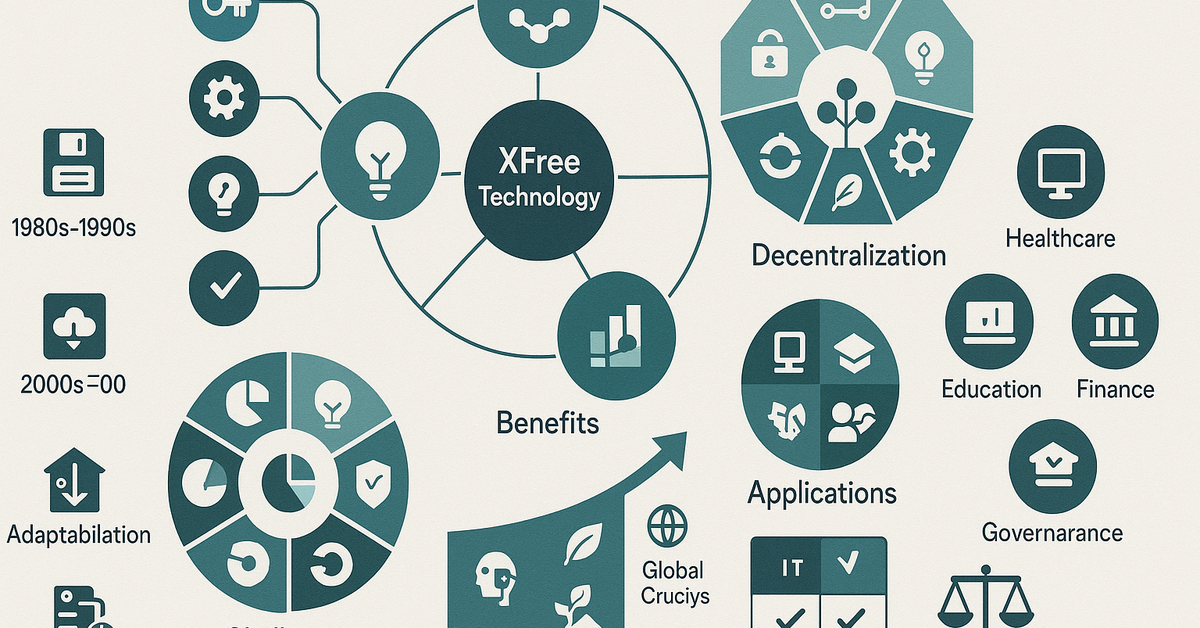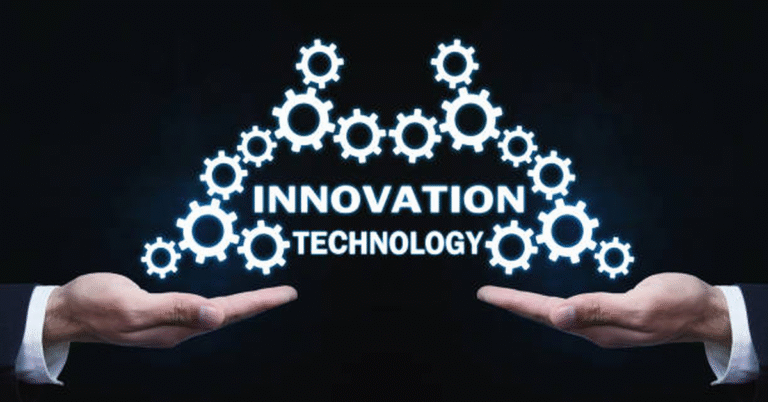
Technology has always been the cornerstone of human development, driving innovation, improving efficiency, and creating new ways of living, working, and communicating. Among the emerging concepts that are beginning to define the digital transformation era is XFree Technology. While the term may sound abstract at first glance, it encompasses a unique approach toward making technology more accessible, efficient, adaptable, and scalable across industries. In this detailed article, we will take a comprehensive journey into the foundations of XFree Technology, exploring what it is, why it matters, how it functions, and where it is leading us in the near future.
Understanding the Core Idea of XFree Technology
At its heart, XFree Technology can be understood as a framework of technological systems designed to eliminate constraints. The “X” often symbolizes variables such as “cross,” “extreme,” or “experimental,” while “Free” highlights its primary objective: freedom from limitations. Unlike conventional technologies that may lock users into certain ecosystems, software, or hardware dependencies, XFree Technology is envisioned as an open, flexible, and inclusive model.
In practical terms, this means XFree is focused on:
- Freedom of Access – Technology that can be used by anyone without expensive licensing barriers.
- Freedom of Integration – Systems designed to interact with multiple platforms seamlessly.
- Freedom of Innovation – An ecosystem where individuals, developers, and organizations can build upon a foundation without restrictions.
- Freedom of Scalability – Tools and solutions that grow with demand, from small-scale projects to enterprise applications.
Historical Roots and Evolution
The philosophy behind XFree Technology is not entirely new. It builds upon decades of evolution in open-source communities, collaborative research, and decentralized systems. Here’s how it evolved:
| Era | Key Developments | Influence on XFree |
|---|---|---|
| 1980s–1990s | Rise of open-source projects such as Linux, Apache, and GNU. | Established the principle of free accessibility. |
| 2000s | Growth of cloud computing and APIs enabling cross-platform integration. | Introduced freedom of integration across digital systems. |
| 2010s | Emergence of blockchain, decentralization, and AI-powered tools. | Enhanced scalability and innovation opportunities. |
| 2020s & Beyond | Focus on interoperability, IoT, and sustainable technology. | Shaping the XFree framework into a universal enabler. |
From this evolution, XFree Technology emerges as a unifying principle that incorporates the best aspects of accessibility, scalability, and inclusivity.
Principles that Define XFree Technology
To truly understand its relevance, let us break down the fundamental principles behind XFree:
- Decentralization
XFree systems often operate without centralized control, distributing data, resources, and access across networks. This promotes fairness and reduces bottlenecks. - Transparency
Openness is key. Users and developers can view how the system works, fostering trust and collaboration. - Interoperability
XFree does not operate in silos. It thrives on integrating diverse hardware, software, and protocols. - Efficiency and Sustainability
Designed with optimization in mind, XFree ensures minimal wastage of resources—be it computing power, bandwidth, or energy. - User Empowerment
The ultimate goal is to hand back control to users, allowing them to shape, customize, and innovate without boundaries.
Benefits of XFree Technology
The adoption of XFree Technology offers a wide range of benefits that extend across individuals, businesses, and entire industries.
1. Cost Efficiency
By eliminating heavy licensing fees and offering open frameworks, XFree reduces costs significantly. Startups and small enterprises particularly benefit from this, as they can scale without financial roadblocks.
2. Enhanced Innovation
With fewer restrictions, developers and organizations can experiment freely, leading to faster innovation cycles and disruptive breakthroughs.
3. Global Collaboration
X-Free encourages cross-border participation, allowing diverse teams to collaborate, share knowledge, and co-create solutions.
4. Security and Trust
Transparency ensures that security vulnerabilities can be identified and addressed quickly. A decentralized model also minimizes risks of single-point failures.
5. Adaptability
X-Free is future-proof. It can adapt to new technologies such as AI, IoT, and 5G without needing complete overhauls.
Applications of XFree Technology Across Industries
X-Free Technology is not limited to one domain. Its principles can be applied across multiple industries, each gaining unique benefits.
1. Information Technology
In IT, X-Free models are enabling cross-platform applications, cloud-based solutions, and open-source development frameworks that power global enterprises.
2. Healthcare
By fostering data sharing across hospitals, labs, and researchers, X-Free helps build integrated health systems. Patients can access their medical records globally without restrictions.
3. Education
X-Free is revolutionizing e-learning platforms by offering open-source tools, free access to digital libraries, and interoperable online classrooms.
4. Finance
Decentralized finance (DeFi) systems operate on principles similar to X-Free, offering people banking alternatives free from centralized control.
5. Manufacturing
Industry 4.0 thrives on interoperability. Machines, sensors, and AI-driven software working in harmony is a direct application of X-Free.
6. Public Governance
Open government data and digital platforms built on X-Free principles promote transparency, accountability, and citizen engagement.
Comparison Table: Traditional vs. XFree Technology
| Aspect | Traditional Technology | XFree Technology |
|---|---|---|
| Accessibility | Restricted by licenses | Open and accessible |
| Integration | Limited interoperability | Cross-platform seamlessness |
| Control | Centralized | Decentralized |
| Innovation | Slower, controlled by vendors | Rapid, community-driven |
| Cost | High ownership and upgrade costs | Reduced cost, scalable |
| Security | Proprietary monitoring | Transparent and collaborative |
Challenges Facing XFree Technology
While promising, X-Free Technology also faces challenges that must be addressed to achieve its full potential.
- Standardization Issues
With openness comes diversity, and with diversity comes difficulty in creating universal standards. - Cybersecurity Risks
Transparency may attract malicious actors. Strong protective frameworks are required. - Adoption Barriers
Traditional organizations may resist moving away from established systems due to inertia or fear of risks. - Funding Models
Since many X-Free solutions are cost-free, sustainable business models to support long-term development are still evolving. - Skill Gaps
Not all industries are equipped with professionals who understand and can implement X-Free frameworks effectively.
Future Potential of XFree Technology
Looking ahead, the future of X-Free Technology appears promising. As global industries continue to embrace digital transformation, X-Free is poised to act as a unifying backbone.
- Integration with AI and Machine Learning – Adaptive systems that continuously learn and optimize processes.
- Sustainability Goals – Supporting green technology by reducing resource waste.
- Cross-Border Ecosystems – Seamless collaboration across countries for innovation.
- Smart Cities – Powering IoT-driven urban infrastructures that interact freely.
- Universal Access to Knowledge – Democratizing education and information sharing globally.
The next decade may witness X-Free becoming as commonplace as cloud computing or the internet itself.
Case Example: XFree in Healthcare
Imagine a global healthcare network where patient records are stored in a decentralized system. A traveler moving across continents can access their health history instantly in any hospital. Doctors can review data securely, labs can share test results, and researchers can collaborate on medical breakthroughs—all without bureaucratic or technological hurdles. This is the real-world power of X-Free Technology.
Ethical Considerations
As with all technologies, ethical considerations must be factored in:
- Privacy – User data should always remain protected despite openness.
- Equity – Ensure that access is universal, not limited to technologically advanced regions.
- Accountability – Transparent systems must still enforce responsibility among users and developers.
These considerations will define how well X-Free integrates into society.
Conclusion
X-Free Technology represents a paradigm shift in how we approach digital transformation. It blends openness with efficiency, decentralization with trust, and accessibility with innovation. While challenges remain, its potential to revolutionize industries is undeniable. As the world moves toward a more interconnected and technology-driven era, X-Free stands as a beacon of freedom, inclusivity, and progress.
FAQs
Q1. What is XFree Technology in simple terms?
XFree Technology is a framework that removes limitations in digital systems, making them more open, adaptable, and accessible.
Q2. How does XFree Technology differ from traditional systems?
Unlike traditional systems that are centralized and costly, XFree emphasizes decentralization, affordability, and cross-platform integration.
Q3. Which industries benefit most from XFree Technology?
Healthcare, finance, education, manufacturing, IT, and governance are among the industries experiencing significant benefits from XFree.
Q4. Is XFree Technology secure to use?
Yes, but like all technologies, it requires strong protective measures. Its transparency helps in quickly identifying and fixing vulnerabilities.
Q5. What is the future of XFree Technology?
The future is bright, with applications in smart cities, sustainable technologies, global education, and integrated healthcare systems.






